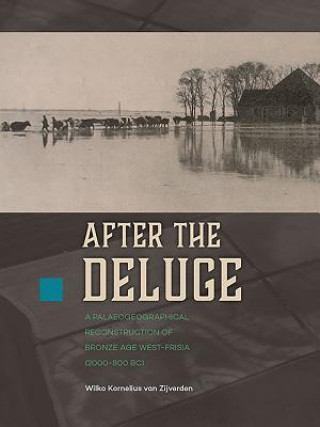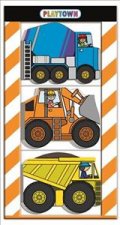
Kézbesítés
Vásárlási tanácsadó





Nem vált be? Semmi gond! Nálunk 30 napon belül visszaküldheti
 Ajándékutalvány
bármilyen értékben
Ajándékutalvány
bármilyen értékben
Ajándékutalvánnyal nem nyúlhat mellé. A megajándékozott az ajándékutalványért bármit választhat kínálatunkból.
After the deluge
 Angol
Angol
 107 b
107 b
30 nap a termék visszaküldésére
Ezt is ajánljuk


After World War II huge land consolidation projects measuring thousands of hectares were carried out in West-Frisia. Large scale excavations of Bronze Age settlement sites were carried out resulting in a convincing model for the Bronze Age habitation of West-Frisia. This model envisaged settlement sites situated on creek ridges in an open almost treeless landscape. After a sudden change in climate c. 800 cal BC parts of the landscape were inundated, peat bogs developed and West-Frisia was abandoned by man. It was widely believed that this densely inhabited Bronze Age landscape was almost completely destroyed during the land consolidation projects. At the start of this century, however, it turned out that well preserved Bronze Age settlement sites still exist in West-Frisia. These sites were not only well-preserved but also situated at unexpected locations. The excavation results also gave reason to think of the presence of woodlands and forests during the Bronze Age. This thesis tries to unite the excavation results from the period of land consolidation and those of the later development led projects. In this thesis the palaeogegraphy is described at three scale levels. West-Frisia, the land consolidation project of Westwoud and several settlement sites. Based on an analysis of excavation results and environmental proxy data, a new model for the development of the landscape and habitation of West-Frisia during the Bronze Age emerges. For the construction of the palaeogeographical maps of Westwoud, a new approach is used, based on, amongst others, macro botanical remains. The thesis concludes with an alternative strategy for the prospection of Bronze Age sites in West-Frisia. This thesis is of interest for anyone who is professionally interested in the habitation history of West-Frisia and people who are professionally engaged with palaeogeographical and vegetation reconstructions. Contents 1. After the deluge: an introduction 1.1. Project outlines 1.2. Structure and development of the physical landscape between 2000 and 800 cal BC 1.3. Site location preferences 1.4. Restraints and opportunities of the environment 1.5. For what use? 2. The history of landscape research in West-Frisia 2.1. Introduction 2.2. Prelude 2.3. Pioneers 2.4. Land consolidation 2.5. The palaeogeographical model 2.6. The habitation model 2.7. The palaeogeography of the Netherlands 2.8. After "Valletta" 2.9. Concluding remarks 3. Communicating vessels, reconstruction of the landscape of West-Frisia at scale 1:100.000 3.1. Introduction 3.2. Model: coastal development and the appearance of the landscape 3.3. Morphology: constructing an image 3.4. Time: dating the landscape 3.5. Habitation: the archaeological record 3.6. A new palaeogeographical map of West-Frisia 3.7. Concluding remarks 4. Reconstructing the surroundings of a Bronze Age farmstead in a wetland environment 4.1. Introduction 4.2. Palaeogeographical reconstructions of wetland sites: an overview 4.3. Methods 4.4. Case-study Westwoud 4.5. Concluding remarks 5. Site location: local variation or uniformity? 5.1. Introduction 5.2. The model 5.3. An uniform description 5.4. A selection of sites 5.5. The test: De Rikkert 5.6. Concluding remarks 6. Bronze Age sites are everywhere! Predictive modelling in eastern West-Frisia 6.1. Introduction 6.2. Archaeology in the Netherlands 6.3. Predictive modelling: De Rikkert 6.4. A new policy document? 6.5. Concluding remarks 7. Conclusions 7.1. Introduction 7.2. The structure and development of the West-Frisian landscape 7.3. Site location and predictive modelling 7.4. Restraints and opportunities of the environment 7.5. Epilogue
Információ a könyvről
 Angol
Angol
Kategória


 Kapcsolat
Kapcsolat Hogyan vásároljunk
Hogyan vásároljunk



















